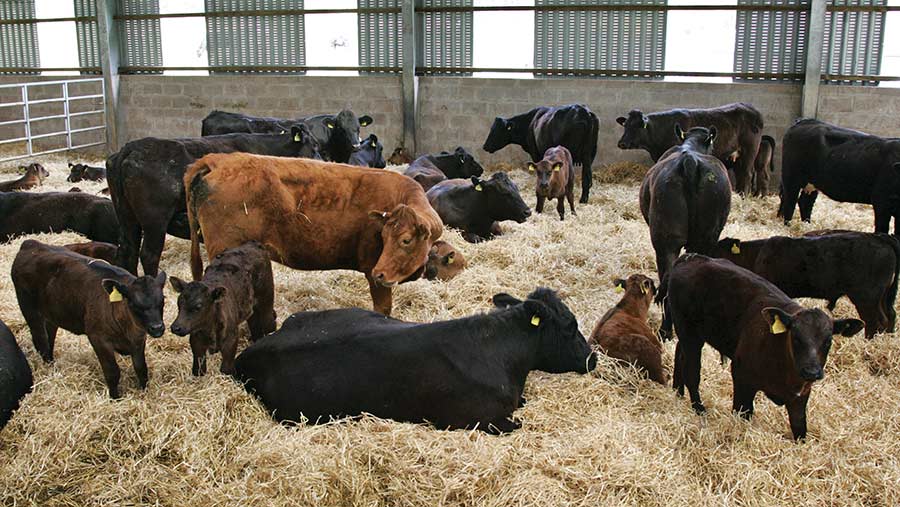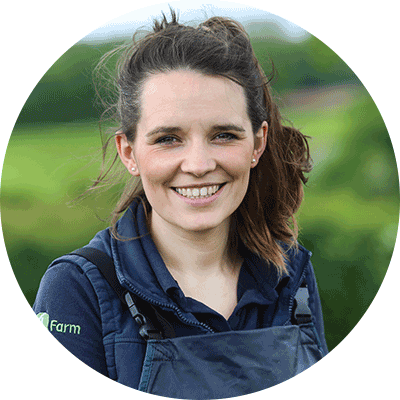Why pre-housing is the time to ward off pneumonia in suckler calves
 © Tim Scrivener
© Tim Scrivener With your suckler herd hopefully still out grazing, I’m sure that housing cattle seems a long way off, but it’s time for a bit of planning now, to maximise your calves’ performance this winter.
Housing is a major stress to animals, especially the youngest suckled calves, which are affected most of all by disease.
After you’ve calved them, reared them, and got them to autumn, a pneumonia outbreak in the sheds is heartbreaking. It’s amazing how many farmers accept and expect this, but it doesn’t need to be the case.
The costs of a pneumonia case are huge: not only the treatment of sick animals, but long-standing impacts on food intakes feed efficiency, and resultant daily liveweight gains, of a whole group, can often be overlooked.
For every calf showing symptoms, it’s likely that double the number will have diseased lungs and be impacting your bottom line, even without losses. With everyone tightening their belts, can you afford to ignore it?
Below are some tips on how to prevent the wheezes and sneezes in your cattle this winter.
See also: Why calf cough is unreliable as early warning for pneumonia
About the author

It is time to get suckler housing in order and plan pneumonia control. Charlotte Watkins of Belmont Farm and Equine Vets offers some expert advice.
Prevention is better than cure
Pneumonia is the major problem we see in young animals in housing. Vaccines can be revolutionary, maximising the calves’ immunity to the main causes. However, choosing the right one, and when to give it, is the secret to success.
Blood sampling a few home-bred yearling animals will show what diseases are present on farm and inform which vaccine schedule is most appropriate.
However, if this is not possible, you can still put together a robust vaccination regime in a discussion with your vet. As pneumonia related to housing often has a large stress component, including pasteurella cover often helps significantly.
Whether vaccines are given up the nostrils (intranasal) or injected, the immunity is not gained straight away, and so they need to be given pre-housing, to get the protection you’re paying for.
Injectable vaccines often give the widest cover, and last longest, but generally require two doses around three to four weeks apart, with immunity only sufficient two weeks after the second dose.
Therefore, injectable vaccine regimes must be started earlier than you expect (at least five weeks ahead of housing) to get the most for your vaccine investment.
As intranasal vaccines stimulate more local immunity in the nostrils, less of a time lag is required between vaccinating and housing – however, they tend not to last as long, or include as many diseases.
Cleaning and disinfecting
Was that gutter leaking towards the end of last winter? Did the tank get knocked and overflow last spring? Or does the roof leave a little to be desired?
Bacteria thrive in warm and wet conditions, so the more moisture that enters the shed, the bigger the risk of disease. Use your time now to make sure the sheds are in tip-top condition prior to cattle coming in.
Cleaning and disinfecting sheds reduces the general bacterial burden present at the start of winter housing, but disinfectants don’t work on dirty surfaces – they need to be clean.
Make sure you start in plenty of time, to allow them to dry out completely before getting out the disinfectant.
Blow out those cobwebs
Ventilation in housing is vital for air movement and removing airborne bugs. About 50% of all naturally ventilated cattle buildings in the UK are not fit for purpose. We often see sheds that do not have adequate air inlets or outlets.
In these cases, hot, moist air cannot be removed and, instead, it promotes bacterial growth and respiratory infections.
Your vet can do a housing assessment to calculate a building’s air inlets and outlets, alongside smoke tests to show how good the ventilation is, and what can be done to help.
It might be as simple as removing a bit of cladding that could make the world of difference this season.
Shared airspace
Pneumonia bugs often spread to younger suckled calves from older (or adult) animals, which are more resilient. Therefore, limiting shared airspaces between different ages of animals can curb disease.
High stocking rates also predispose to disease, so pregnancy diagnosing those cows earlier and selling off your barren cows will not only save you winter forage they are using up, but also help the health of your calves.
Feed to prevent
Creep feeding calves while suckling at grass transitions them better and reduces stress at weaning. This maximises their daily liveweight gains and also reduces the chances of disease when housed.
It is important that calves are achieving good creep intakes prior to housing, so start offering it at six to 10 weeks pre-weaning.
Reduce stress
Although it helps with logistics, saving up jobs to be done together at housing is one of the worst things you can do.
By completing multiple jobs – such as weaning, castrating, and dehorning – at the same time as housing, you dramatically increase the stress on the animal and can prompt much larger and more severe outbreaks of pneumonia.
These jobs should be carried out separately – and don’t forget your anti-inflammatories to further reduce stress.